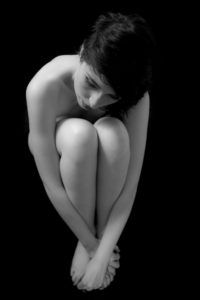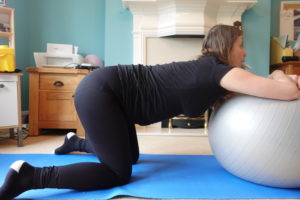What are the type of Pelvic Pain?
They are due to a muscular dysfunction caused by muscular hypertonia (hypertonic pelvic floor)

- Dyspareunia: a pain of variable intensity felt during sexual intercourse by a man or a woman.
- Vulvar Syndrome: a vulvar discomfort lasting for more than 3 month for no apparent reason.
- Vaginismus: prolong or recurrent muscular contraction of pelvic floor muscles around vaginal opening. This involuntary and incontrollable reflex prevents any desired vaginal penetration, even a finger or a tampon when the vaginismus is total. In other case, it can be partial or situational when it appear only in certain situation (e.g. sexual intercourse)
- Vestibulitis Syndrome: pain touching the vestibule (membrane between the small lips localised around the vaginal opening). These pains are often describe as a burn sensation or even a tear/stabbing sensation during a pressure (vaginal penetration, tampon insertion, gynaecological exam, riding a bike…) on the vulva or at the vaginal entrance
- Pudendal Neuralgia: neuropathic pain (intense, burning or electrical pain) in between genital organ and anus
- Interstitial Cystitis/Painful Bladder Syndrome: often unknown and misdiagnosed concerning bladder, pelvic area and surrounding pelvic region. Bladder wall is normally covered of a protective layer preventing direct contact between urine and bladder tissues. In Interstitial Cystitis, this layer is too thin. Consequently, urine acidity creates a burning sensation in the vesical and pelvic region. Patients may experience mild discomfort, pressure, tenderness or intense pain in the bladder and pelvic area. Symptoms also include urgent need to urinate, a frequent need to urinate or a combination of all the above. Pain may change in intensity as the bladder fills with urine or as it empties. Women’s symptoms often get worse during menstruation. They may sometimes experience pain during vaginal intercourse
- Irritable bowel syndrome (IBS): common trouble of digestive system causing abdominal pain, constipation, diarrhea , or both alternatively
- Ano-rectal pain, often link to difficulty to eliminate stools, require bowel habits and postural education
- Sacral, coccyx (tailbone) and thoraco-lombar-abdominal-pelvi-perineum pains result from postural and biomechanical change occurring over the pregnancy: shoulder inside, increased lordosis (lower back arch backward), abdomen shift forward, hips in external rotation (feet outside like a cowboy)
- Pain related to pudendal nerve: it is characterized by a perineal pain often on one side, similar as a burning sensation with sometimes pain inside the anus. These symptoms are aggravated in sitting position and relived in standing/lying position. It can also be associated to a pain around vaginal orifice
- Pain due to episiotomy scar or suture break, increased in sitting position and during sexual intercourse
- Pain at external anal sphincter level, due to injury, tear, large episiotomy. It presents as an intense and punctual pain trigger by bowel movement and sometimes in sitting position
- Abdominal pain: C-section scar are one of the cause but rectus addomini diastasis lead to dysfunction of abdominal muscles and may result in pain while performing simple movement and task of life.
What are the causes?
- Trauma
- Local fracture or adjacent perineal tissue
- Sprain and dislocation
- Labour
- Extreme sport (by creating muscles spasms predisposing to these pains)
- Surgery
- Haemorrhoidal ablation, abnormal cracks, ulcer, urethral surgery
- Labour with or without complication
- Sexual trauma: sexual abuse leading to defence reaction and closing of perineal muscles
- Psychosomatic aspect: general tension of the body resulting from life stress as obviously an impact on all the muscles including perineal muscles
Physio/Osteo Treatments
- Pelvic Pain Rehabilitation
- Pelvic floor rehabilitation
- Abdo-MG
- Hypopressive gymnastique
- Osteopathy
- Sexual pain rehabilitation



